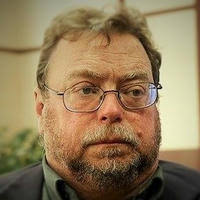The CIA stated in a barely-readable memo from Western Hemisphere chief Theodore Shackley that Jack Anderson's report that Howard Hunt broke into Chilean diplomatic missions in Washington and New York on behalf of ITT had "no foundation." The break-in of the Chilean Chancery in Washington occurred on May 13, 1972, around two weeks before the first Watergate burglary. Papers and radios were searched. Chile under President Salvador Allende had been negotiating terms over acquiring Chile's telecommunications neywork from ITT control. The CIA documents show that State's Security chief Marvin Gentile was in the loop on the Chilean embassy break-in. State's Security is responsible for security of foreign embassies along with the Executive Protection Servcie of the Secret Service.
A December 12, 1972, account notes an inquiry from the New York Times' David Burnham about a CIA information processing briefing for twelve members of the New York Police Department.
A January 18, 1973, account stated that Representative Lucien Nedzi briefed CIA officials on a conversation the congressman had with Seymour Hersh of the New York Times on what the reporter had discovered about domestic CIA activities. The briefing occurred during an agency briefing with Nedzi prior to the congressman's trip to Finland, Leningrad, Sofia, and Athens.
A March 6, 1973, account states that Hugh Sidey of Time was going to write that Howard Hunt was employed by a CIA proprietary company called Robert R. Mullen Company. The CIA admits the company provided "cover" for "one or two officers overseas."
The documents also show close liaison between the Bay of Pigs CIA operatives, those arrested for the 1972 break-in of the Democratic National Committee at the Watergate, and mobsters associated with the assassination of President John F. Kennedy, particularly Johnny Roselli. The documents show the involvement of Robert Maheu, Howard Hughes' chief adviser, and a New Yorker named Sam Gold, in establishing links between the CIA and the "Cuba crowd." One of the "Cuba crowd" was Juan Orta, a Cuban who had access to Castro and who was to poison him. After Orta got "cold feet," the mission went to Dr. Anthony Verona, a ringleader of the exiled Cuban "junta" in Florida.
In Spring 1972, Bay of Pigs operative E. Howard Hunt phoned the CIA's External Employment Assistance Branch's Frank O'Malley and asked him if any CIA lockpickers who were retiring or resigning from the agency might be available. The call was between Match and May 1972. In May 1972, Hunt and his colleagues were arrested for the break-in at the Watergate.
Hunt was also apparently acting as a recruiter for the Republican Party in 1971. A retired CIA officer living in Winter Haven, Florida said Hunt tried to recruit him as Security Officer for the GOP and that "money was not a problem." The ex-CIA agent was asked to provide a "positive and counteraudio program" for the Republican Party.
Hunt and ex-CIA agent James McCord's recruiting efforts are documented in the report, including an attempt to hire an ex-CIA employee from Halifax Security Company of Chicago prior to the Watergate break-in.
A June 20, 1972, CIA account states that Watergate burglar Bernard L. Barker was hired by the CIA in 1960 and terminated in 1966. There is also an acknowledgment that Hunt and McCord were CIA employees.
A May 23, 1972, CIA memo concerned a report by CBS News' Dan Rather on Watergate that contained information from a classified report. The report indicated that CIA employees had leaked classified information to Rather.
Another May 23, 1972, CIA memo concerned beacons furnished to U.S. ambassadors in the event they were kidnapped.
A June 26, 1972, account says that the CIA director concurred with the FBI's Freedom of Information Act release to Bernard Fensterwald of three photos acquired of Lee Harvey Oswald in Mexico and which were previously furnished to the Warren Commission. The Oswald photos are actually those of an Oswald imposter, said to have been a CIA mercenary who worked in the Congo in the early 1960s.
A January 22, 1973, account of Howard Hunt's previous night's appearance on TV was noted by General Vernon Walters. The CIA Executive Director was concerned about Hunt's statement that he felt he was no longer bound by his CIA secrecy agreement.
A May 23, 1973, memo states that a CIA Deputy Director for Plans (DDP) official in charge of narcotics matters knew Watergate burglar leader G. Gordon Liddy and was "probably involved with Hunt." The DDP officer was also linked to the CIA's Lou Conein of the White House.
Conein surfaces in a June 1, 1973 "Eyes Only" memo on controversial expenditures of CIA funds. It says that "when Lou Conein received his summons to report to the Joint General Staff Headquarters on 1 November 1963 a large amount of cash went with him.' Written by the CIA's IG Walter Elder, the memo informs Colby, "My impression is that the accounting for this and its use has never been very frank or complete." Conein's transfer to the Pentagon was only three weeks before President Kennedy's assassination in Dallas and the day before President Ngo Dinh Diem's assassination in Saigon.
The same memo states that McCone was not satisfied with the use of Agency funds for the improvement of the economic viability of West Berlin and an investment program in Mali.
Next Page 1 | 2 | 3 | 4 | 5 | 6
(Note: You can view every article as one long page if you sign up as an Advocate Member, or higher).





